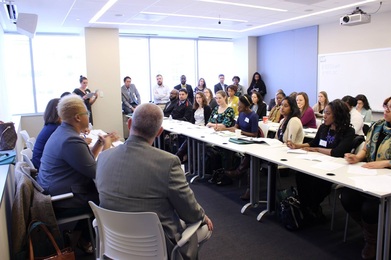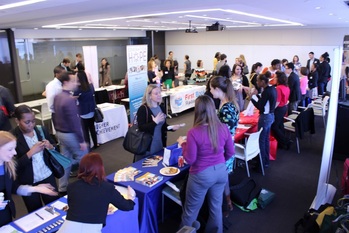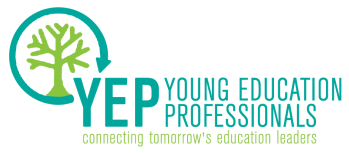 Dozens of breakout sessions were offered. (Credit: Jeremy Meredith)
Dozens of breakout sessions were offered. (Credit: Jeremy Meredith) "It's about giving students different options and letting them pick what's right for them," Candice Mott, a career and technical educator in Prince George's County Public Schools, said during a session she facilitated on aligning school curriculum to career and industrial pathways. By doing so, Mott says, her students gain more satisfaction and confidence in the fields that interest them.
Mott, having gone through a similar trajectory herself as a student, shared that the National Academy Foundation boasts higher student attendance and retention rates in career academy schools than those without the model. The reason behind the spike in student engagement? "The schools are now moving from a K-12 model to a K-16 model and providing a smoother transition for students into postsecondary institutions and into their careers," she said.
In a similar fashion, the D.C. Collaborative for Change (DC3), another initiative in the district, offers teachers the same type of empowerment through a variety of professional development opportunities and professional learning communities. The goal of the DC3, which works with nine schools locally, is to foster best practices in the classroom by encouraging and demonstrating good teaching through frequent teacher and principal meetings across the schools, workshops chosen by teachers according to their interests, classroom observation visits, and assessment working groups.
Dana Nerenberg and Norah Lycknell, principals in D.C. elementary schools within the DC3, said that teacher retention within the collaborative was between 94 to 98 percent, significantly higher than D.C.’s averages. "It's because the collaborative adds an extra layer of support for teachers. Being a part of something bigger inspires them," Lycknell told the attendees at the session she facilitated. “Teachers are told at the induction stage that they are not just a part of one school, but of a larger community of schools.”
 Opportunity Fair at conference. (Credit: Jeremy Meredith)
Opportunity Fair at conference. (Credit: Jeremy Meredith) A discussion on providing training and support for teachers to address the barriers that prohibit parent and family participation in a student's school life also took place in an interactive session led by Gina Mandracchia, program associate with the Flamboyan Foundation. Participants learned how the foundation uses funds to prepare teachers to conduct student home visits, lead family engagement sessions on assessing student's academic skills and progress, and foster positive ongoing communication with parents throughout the year, even for students with families in dire situations.
The message of driving student engagement through teacher, parent, and various stakeholder partnerships actually started with the conference keynote and resonated throughout the day-long conference. Brooke Haycock of The Education Trust put on a one-woman play, portraying two minority students, Carl and Isaiah, based on two years of interviews. One student fared better than the other by the end of the performance, the reason boiling down to the level of involvement by teachers and school administrators in the students’ school and home lives. Haycock summed up the school’s powerful role in determining an individual’s future very succinctly in her epilogue: “Maybe the only difference [between Carl and Isaiah]... is us..."
Francesca Duffy is a communications and advocacy specialist at a national association for school superintendents. She can be reached via email or Twitter.

 RSS Feed
RSS Feed